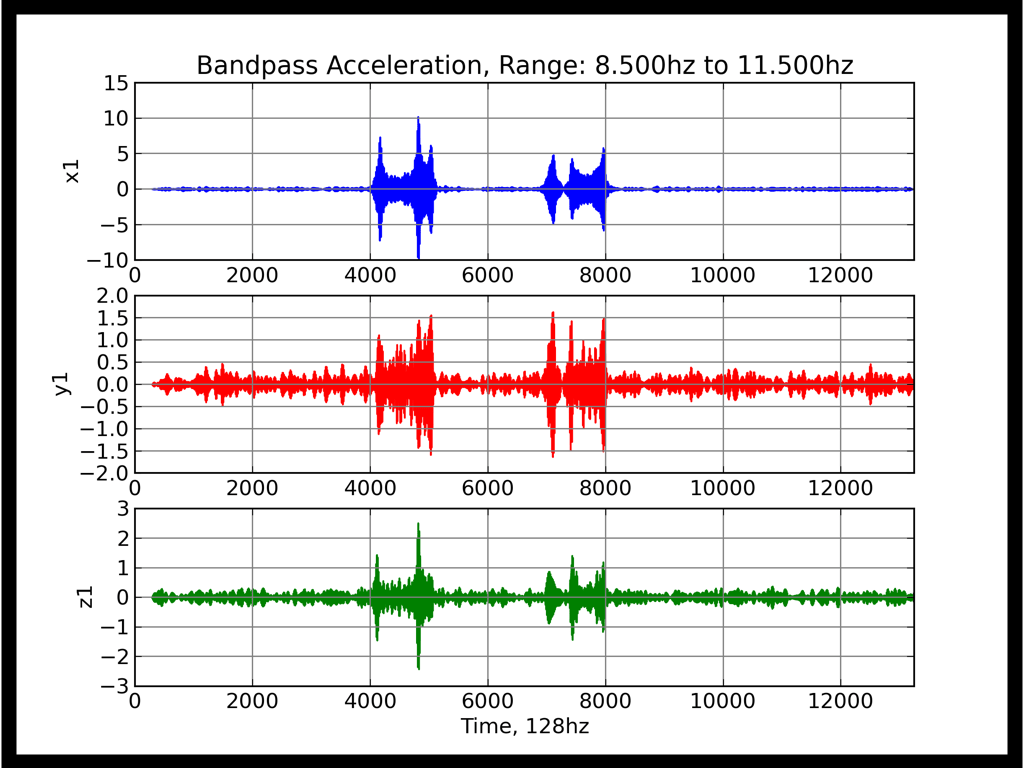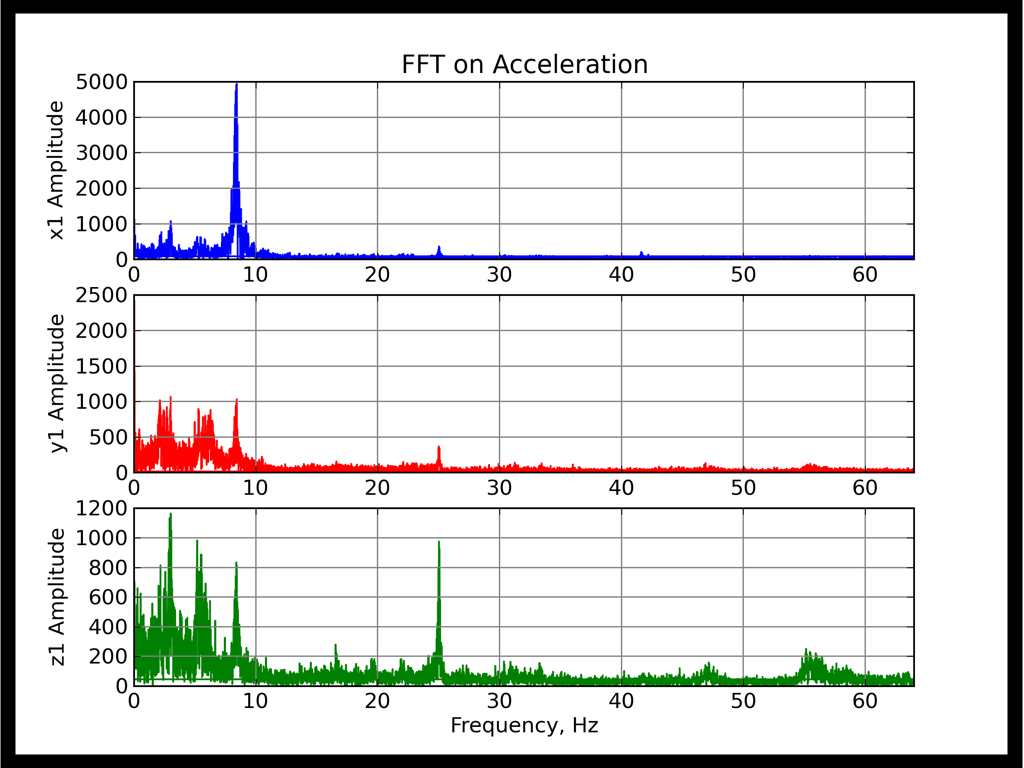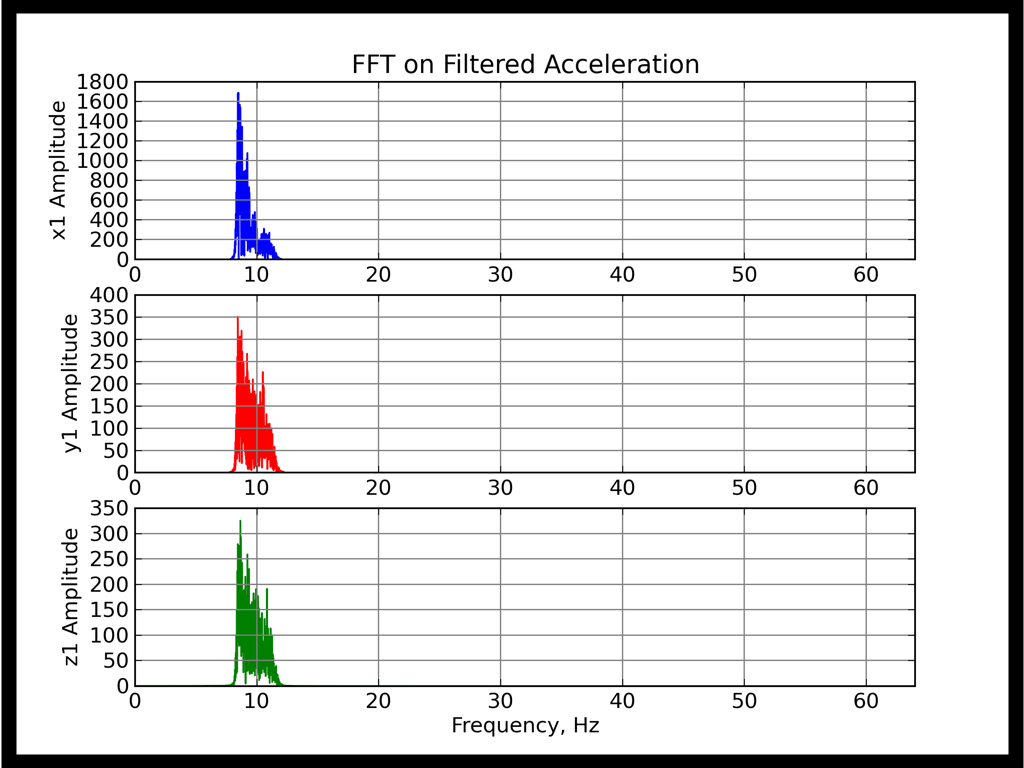Signal processing and integer algorithm FFT
Python prototype and C integer algorithm
2016-09-18 00:00:00 +0000
The objective of this project was to filter an accelerometer signal at a given frequency range (bandpass) and analyze the frequency domain to find a known input frequency. The intended application was real time analysis for a microcontroller. As such, the project had two major phases:
- Python implementation of bandpass filter and fast fourier transform (FFT)
- C implementation of Python program using an integer algorithm for the FFT
This project came to me via Upwork and was my first successful contract project. The Python code repo is here and the integer algorithm repo is here.
Python implementation
The first step I took was to chart the given data. I wrote a Python function to read the csv files in the format they were given. Using Matplotlib, I was able to quickly visualize the data as given to see what I was working with.
Then, I filtered the data based on the given bandpass range. I ultimately went with a Butterworth filter from Numpy, but realized after some debugging that in order to have no phase delay I needed to use a forward-backward filter rather than a one way filter.
The first chart below is the raw input signal followed by the filtered signal.


I then implemented the fast fourier transform on the raw signal to get an idea of the frequency domain and begin to understand how my results should look. This was easily done using Numpy and the FFT package.
Finally, running the FFT on the filtered results ultimately yielded the frequency the client expected to see.


Integer algorithm in C
The results using the integer algorithm in C are similar, but the development process was very different. To begin with, I didn’t really know what an “integer algorithm” meant prior to accepting the job, so understanding the nuances of integer-only math was a learning curve. Furthermore, working with a C-library is not as friendly as working with a Python library. I immediately got stuck on using the library with the correct sampling frequency to stay above the Nyquist frequency.
It was quite the experience and I learned a ton from it.